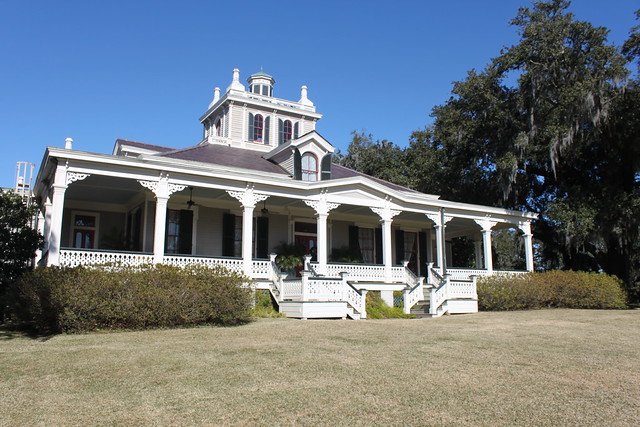About 14 hours after we left Abilene, we arrived at the address for our reserved hotel room in Lafayette to find that the hotel wasn't there. There was a hotel at the address I was given by the America's Best Value Inn online reservation system, but it wasn't an America's Best Value Inn. We were hungry. We were tired. After a
restless night and
driving 600 miles, we were in need of rest. Dealing with a case of a hotel that doesn't exist wasn't on my list of things I wanted to do.
I opened up the reservation confirmation email from which I'd gotten the address for the hotel and confirmed that we were at the right address. I then searched the reservation email for a phone number. There was none. There was a label for a phone number, but none was listed. I then went to the website from which I reserved the room and found a customer service number. I called. The rep informed me that they could not help me because they have no hotel at that address. I told her that's why I was calling. I reserved room from their website and was sent to a location at which they have no hotel. She again repeated that she could not help me because it was not their hotel. She then went on to tell me that she couldn't cancel my reservation and that my credit card would be charged in spite of them having no hotel. She said their reservation services at the number I called have nothing to do with the website. I asked why their number was then listed on the website for customer service if they didn't provide support for reservations made on the website. She told me I had to call a different number during regular business hours. She didn't seem to care that it was late and I needed a place to sleep.
And that's when I flipped.
If you are in the hospitality business, you need to be available to solve problems you create 24 hours a day, 7 days a week. Hotel services and their problems aren't limited to banker business hours. Don't tell someone with a reservation who arrives to find no hotel that it isn't your problem. Don't tell the customer that their credit card will be charged as a "no show" when the frickin hotel for which you confirmed a reservation doesn't exist.
When I raised my voice, the woman on the other end of the line said she would no longer talk to me. I asked to speak with her manager. I then repeated the same conversation with the reservation manager. Each time she said "sorry, we can't help you", I got more frustrated. A second person was no refusing to help me resolve the problem and find a place to sleep for the night.
During these conversations, we had all seemed to be working under the assumption that the hotel at which I made the reservation was no longer affiliated with America's Best Value Inn. As we talked, I looked at the confirmation email and noticed a number of peculiar things. Fields in the reservation info form that should contain information weren't populated or contained tokens that should have been replaced with the data they represented.
 |
| There is no inn at the address provided |
After realizing that the reservation manager likely hadn't actually looked up my reservation, I asked her to check again. When she finally looked it up, she discovered that her system showed a different address than was sent to me. And, sure enough, they had a hotel and I had a reservation at that hotel. Their system sent me to the wrong address.
This wasn't just a case of the hotel at the address no longer being associated with the chain. This was a case of the hotel's reservation system sending out emails with the wrong address.
After they failed me two nights in a row, I decided to avoid America's Best Value Inn in the future. Not only is their quality too variable, but now I have reason to distrust their reservation system, and I never again want to have to deal with their reservation customer service.
When your technology fails your customers, take ownership of the problem and help get it fixed. Get your customers what they need. Please.
 |
| Google maps street view shows an America's Best Value Inn at the provided address |
PS: My theory is now that the hotel at the address to which I was sent was once an America's Best Value Inn (as evidenced in the Google image above) and had the same name in the reservation system as their current hotel in the area, and some data lookup was getting the data from the old hotel rather than the current hotel bearing that name.































































